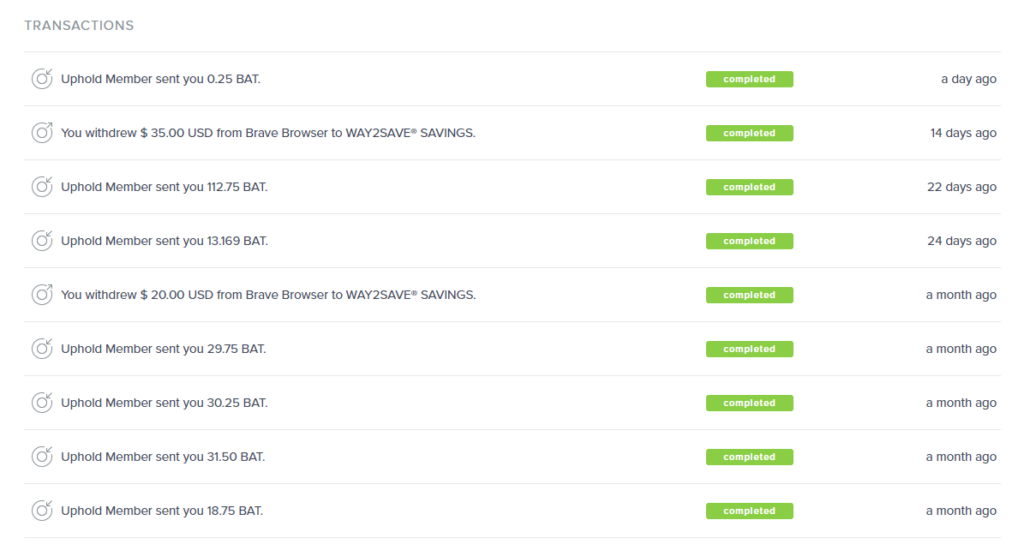
Why You Should Be Using Brave Browser on your Phone
You there. Yes, you, the person reading this blog. Do you have a smartphone? Has your smartphone given you an immediate window into the greater world and a lifeline to those closest to you? Has your smartphone turned your waking life into a wondrous Skinner Box of unending shiny lights and flickering serotonin doses? Has your uninhibited access to the internet gifted you with the ability to Google “what if cats had opposable thumbs” at 3AM only to find that so many other people have already had that exact same thought?
No? Me neither, that would be weird.
Regardless, if you use your phone to browse the internet at all then you should be using the Brave web browser.
What is Brave?
At a very basic level, Brave is a web browser built around a rethinking of how ads and your data should be used while browsing the internet. Let’s consider the traditional model of web browsing for a moment.
If I use a browser like Google Chrome on my phone and I go to a website that serves ads, my browser will load those ads along with all the files necessary to view the website. This adds to the time it takes for the page to load, and consumes extra data. Along with this additional overhead that costs me time, money, and battery life, many websites run trackers which are used to analyze me as a viewer of that page.
Now while it seems to me that most of my peers seem to range from completely indifferent to being somewhat excited about the omnipresent surveillance capitalism and nearly inescapable identity monitoring that modern technology has created for us, I tend to be a bit apprehensive when considering global society’s headlong hurdle towards a daring synthesis of 1984 and Brave New World. Even if you don’t think giant tech oligopolies knowing everything about you is a bad thing (which I do), I think we can at least agree on the fact that you should be getting something out of it. I mean it’s your data, it should be working for you, right?
Consumers (or by Brave’s nomenclature, users) pay attention to things, and that attention has value. Advertisers want to claim some of that attention so they can sell their products to users. Advertisers work with content creators and businesses (or again, by Brave’s nomenclature publishers) so that they may place ads on publishers’ platforms to claim a piece of the users‘ attention. In the scope of current web-browsing, this model sounds alright for advertisers and publishers, but what is the user getting out of this? The answer is not much, and on top of that they are essentially monitored everywhere they browse, and there is the extra overhead of downloading ads as mentioned before. The Brave model is a relatively simple alternative to this which makes the average user’s experience faster, more private, and it even provides users with tangible benefits for their browsing.
The Brave Model
To start with, Brave doesn’t load ads, and tries to not load trackers. This saves the user time and data. Instead, Brave simply shows its own ads periodically which capture the user’s attention.
In Brave’s model, this attention is broken into the aptly-named Basic Attention Token (BAT). BAT is a cryptocurrency (gross, I know, but stick with me) which is essentially the currency used between users, publishers, and advertisers in the browsing experience.
As a user views more content and sees more of Brave’s ads, they generate BAT in a wallet tied to the browser. By default, a small portion of this BAT is donated to the pages of participating publishers upon each page visit, similar to the way in which a users page views would generate ad revenue in the traditional model. To be clear, the bonus here for the user is that they are reaping some of the benefits of their own browsing. Where in the traditional model a user would get nothing for looking at pages, Brave users accumulate value along with their usage.
Additionally, after generating value with faster times and lower data use, the user’s data remains on their device. This means that the metrics resulting from the user’s data use are partially anonymized.
So to recap, the Brave browser model has these benefits over something like Chrome:
- Faster
- Uses less data
- More privacy
- Generates value for the user
Does it Actually Pay Out?
This was a concern of mine in adopting the web browser. I was already pretty much sold on not having to load ads and trackers, but I was completely skeptical about the idea of being able to cash out cryptocurrency into anything tangible. It turns out though, that the process for tying BAT to a bank account is surprisingly short and sweet. Essentially, you verify the BAT wallet tied to your web browser, tie that to an Uphold account (which the browser helps you do), and then link that to the eligible bank account of your choice.
After about six months of using Brave and generating BAT, I decided to go through the steps I just listed, and see if I could cash out. The process took about 30 minutes (account creation is pretty much the same everywhere online these days), and I was able to successfully send a test transaction to my bank account. Over the last six months, I’ve generated about $60 worth of BAT and cashed $55 of it out to my bank account.

All in all, I’m pretty pleased.
I will note that the model of BAT isn’t ideal for speculation, so I really wouldn’t encourage anyone going cowboy buying a bunch of BAT on Coinbase or anything like that, but that in itself is probably worthy of its own post.
So Why Just Phones?
I’ve limited my recommendation to phones because to me that’s where data and speed seem the most important. When you open new tabs in Brave it actually will tell you just how much time and data you’ve saved over your usage, and it ends up being not insignificant. The image below is what I’ve saved after about six months of the absolute dankest memes:

I also haven’t extended my recommendation past phones because while Brave is Chromium-based (meaning compatibility issues shouldn’t really be a problem), I have found it to not quite be of the same comfiness-caliber as Chrome or Firefox’s desktop experience. Additionally, if I do any kind of development I’m still going to want to work with Chrome.
That said, if you want to use Brave for casual desktop use, I would totally recommend it. I’m all for de-Googling as much as possible (no that’s not a weird fetish) and encourage everyone to try and become responsible and independent denizens of the interwebs.
So What’s the Catch?
Currently, the big catch seems to be in what publishers get out of Brave. To get BAT from viewers, you have to be a Brave verified publisher, which requires actually knowing that the browser even exists in the first place. This also means that if you have a content creator you want to support who is also semi-dependent on the ad revenue they generate from your visits, you might not want to use Brave. …Or you could get them to join the club.
When a publisher becomes verified, Brave not only shares a default amount user Bat with them on each page visit, but users are also able to tip content creators with custom amounts of BAT if they feel like it.
The second and much smaller catch I can see comes with the nature of crypto, and that would be in the form of transaction fees. Moving BAT from your uphold account to turn into cash in your bank account comes with a 5% transaction fee. This might rankle some crypto purist’s cankles, but in my mind its pretty much free money for interneting to begin with so I’m not one to complain.
In Short
Brave is great for “users” browsing the internet on their phones for the following reasons:
- It’s faster
- It uses less data
- It’s built around user anonymity
- It gives users tangible (and cash fungible) benefits
- It theoretically can provide more ad dollars for publishers
- It theoretically can provide better targeting for advertisers
The only reason I can think of that a person might not want to use Brave is if they really, really, really don’t like the idea of depriving their favorite webcomic of all 30 cents of funding they would provide with their weekly viewership. Otherwise, I really do believe that everyone should be jumping on board.
Speaking of…
In the case I’ve convinced any of you fine readers that this is something worth trying, here’s my referral link for when you register:
https://brave.com/wel860

And for those of you who are more skeptical, I fully encourage you to take a look at the BAT website and the Brave website and make your mind up for yourselves.
The way I see it, if over the course of a year I save a few hours of time and make a hundred bucks browsing the internet with a new browser, I sure as heck am gonna do it. Having a sense of privacy is icing on the cake for me, even if at this stage in the game I don’t believe anyone else actually cares.
Anyways, I hope that you all take a look at Brave and what it has to offer; I know I’ve enjoyed my experience so far. If you have criticisms or reasons to not use the app, I’d love to hear them since I’ve only recently begun to educate myself on it in the most pedestrian of fashions.
As always, thanks for reading,
-WellTree